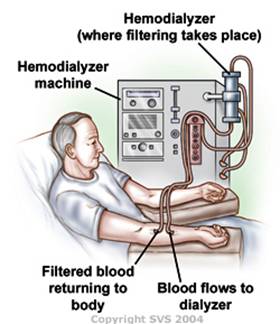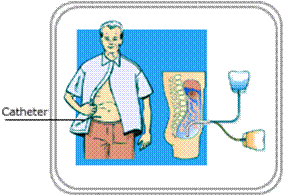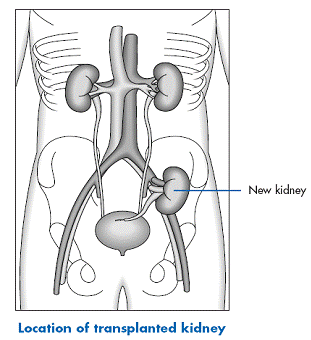toh
The treatment options for kidney failure include dialysis or transplantation.
Dialysis treatments can be hard on you in many ways. You have to perform the procedure regularly and restrict your diet. Both of these things can make you feel tired a lot of the time. There are two types of dialysis: hemodialysis and peritoneal dialysis.
Hemodialysis
During hemodialysis, the blood is passed through a machine outside the body that cleans it. It can take three to four hours and you have to do it three times a week. You can also do it six times a week for shorter periods of time, or you can do it at night while you are sleeping. This is called nocturnal hemodialysis. Hemodialysis can be done at the hospital, or you can get special training to do it at home.

Peritoneal Dialysis
In peritoneal dialysis, the blood is cleaned inside the body, rather than through a kidney machine. The peritoneal cavity is the area that surrounds your intestines and other organs in your abdomen. In peritoneal dialysis, you fill this cavity with a dialysis fluid. Waste products and excess fluids pass from the peritoneal cavity into this fluid, which is then drained and discarded. This is called a fluid exchange.

Peritoneal dialysis has to be done every day. There is a machine that does the fluid exchange while you sleep. Or, you could also do the fluid exchange yourself four or five times a day. People who choose peritoneal dialysis are trained to do the procedure at home.

Transplantation
The best treatment available for kidney failure is a kidney transplant. A working kidney transplant allows people with kidney failure to live longer and have a better quality of life. A kidney transplant is not right for everyone.
During a transplant, the transplanted kidney is inserted into the abdomen near the bladder. The recipient’s kidneys are not removed unless there is a good reason to remove them.
There are two types of transplants: a deceased donor transplant or a living donor transplant. A deceased donor transplant is given to a person on the deceased donor waitlist. It comes from someone who has died and signed up to be an organ donor.

The wait list for deceased kidney donation keeps getting longer. The average time on the wait list is five years for people in the Ottawa area. Deceased donor transplants are successful in many people, but it is preferable to have a living donor.
Last updated on: December 23rd, 2016


 To reset, hold the Ctrl key, then press 0.
To reset, hold the Ctrl key, then press 0.